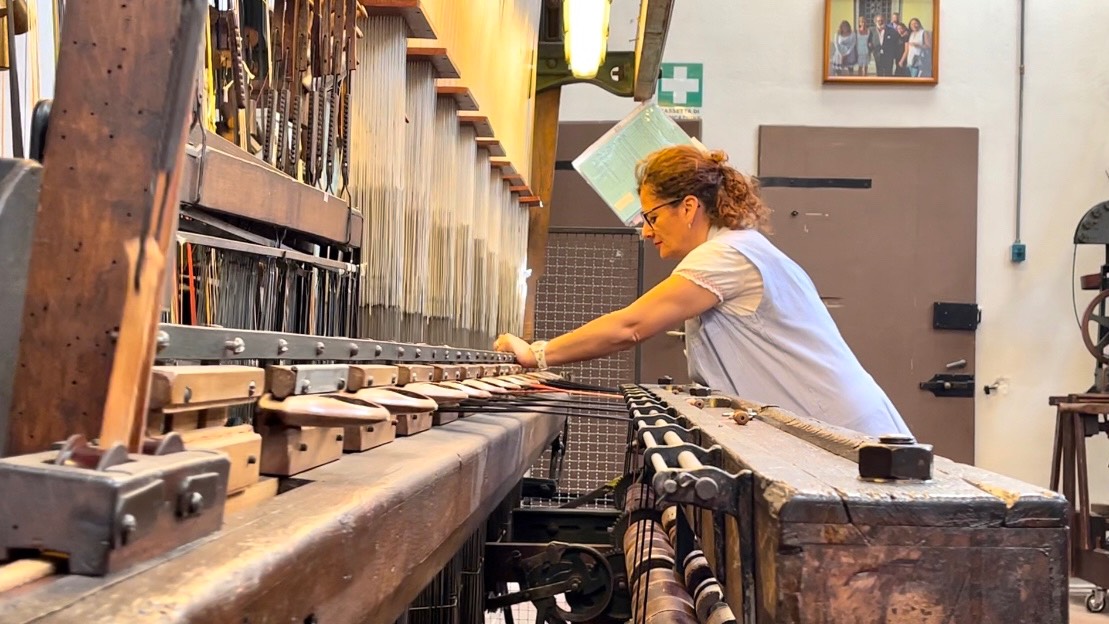02:49

Behind an iron gate in central Florence, on the south bank of the River Arno, there is a distant rattle coming from inside an old warehouse. It is a sound that helped make Florence one of the richest cities in the world a few hundred years ago - the silk looms.
The Antico Setificio Fiorentino or the old silk factory was founded by a group of aristocratic families in the 18th century - where 300 years later, raw silk is still being spun into yarn on delicate wooden wheels.
The different colors of this silk yarn is then woven together into intricate patterns on traditional looms.
READ MORE
Why is the Russian language under threat?
France's influencers face threat of prison
Germany pledges billions to car industry
At the peak of its silk production several hundred years ago, Florence was home to 8,000 looms. But today, there are just a few left. To preserve at least some of that heritage, the family behind the Stefano Ricci fashion brand stepped in to buy the silk factory in 2010.
The company's headquarter is in Caldine, on the outskirts of Florence.
'Passion and love of craftsmanship'
"The family decided to buy the factory because of love, because of passion," said Elisabetta Bardelli Ricci, the General Manager of the Antico Setificio Fiorentino.
"My father-in-law had tea with the previous owner, the Marchioness of Pucci, and fell in love with it. So it's about our passion and love of craftsmanship, which is a fundamental philosophy of the Ricci family."

Some of the traditional looms can only weave a few meters of fabric per day. /FSN/CGTN
Some of the traditional looms can only weave a few meters of fabric per day. /FSN/CGTN
The star attraction is a warper machine that was built in the early 1800s to a much older design by Leonardo da Vinci. However, while some of the traditional looms can only produce a few meters of fabric per day, the old silk factory is very much still in use.
Its fabric hangs in the Kremlin in Moscow, and have been used to make dinner jackets for the Italian opera singer Andrea Bocelli. The silk from these looms also forms part of the Stefano Ricci homeware line.
If you ask a member of the Ricci family, though, this is a business that is also deeply personal.
"When you walk inside, into the Setificio, it's like listening to a beautiful orchestra," explains Filippo Ricci, Creative Director of Stefano Ricci.
"Because you see these handlooms weaving at a very slow speed together with the modern looms - we call them modern but they are from 1850 - which go at a little stronger speed and those together combined create this music… which creates the fabrics."

Subscribe to Storyboard: A weekly newsletter bringing you the best of CGTN every Friday
Cover image: An employee looks on as raw silk is spun into thread. /FSN/CGTN